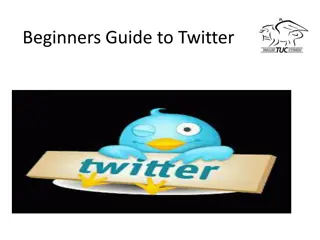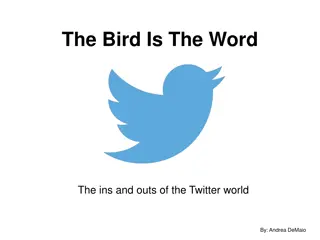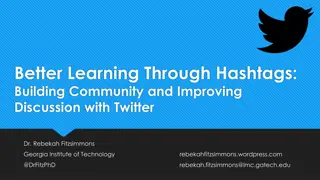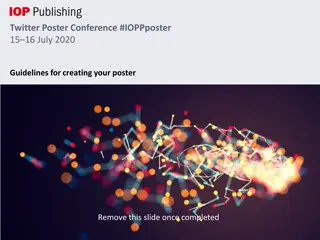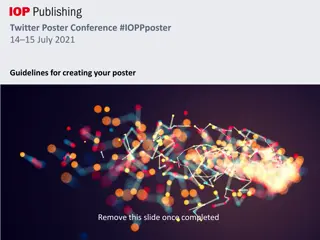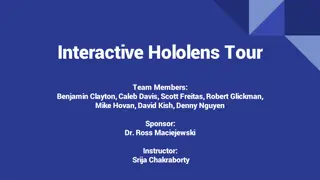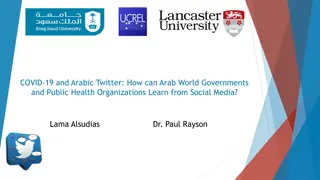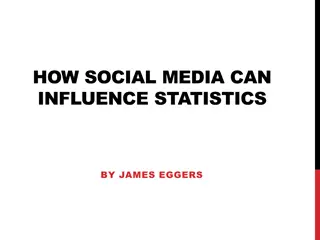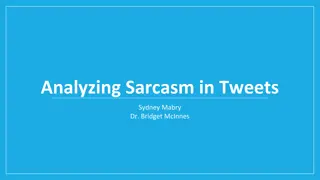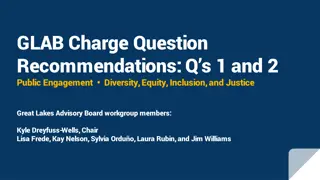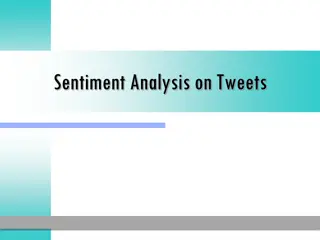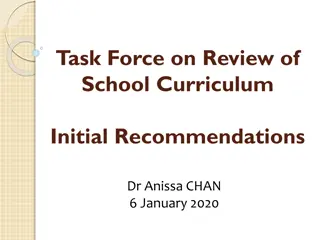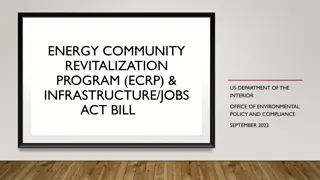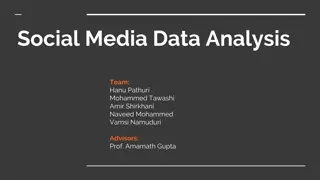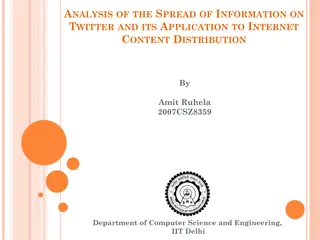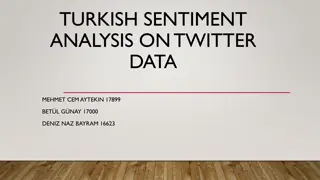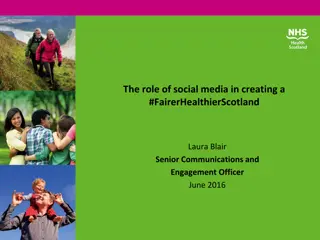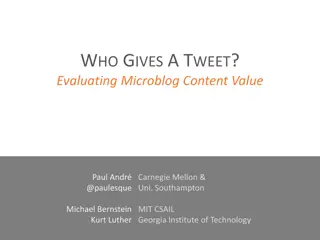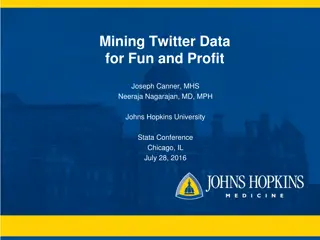Enhancing Twitter Engagement: Recommendations for Orphaned Tweets
Twitter users often face challenges with orphaned tweets lacking hashtags, impacting visibility and engagement. Manikandan Vijayakumar's thesis explores leveraging social signals to recommend hashtags, highlighting the significance of hashtags in organizing tweets, enhancing discoverability, and increasing audience reach on the platform.
Download Presentation

Please find below an Image/Link to download the presentation.
The content on the website is provided AS IS for your information and personal use only. It may not be sold, licensed, or shared on other websites without obtaining consent from the author.If you encounter any issues during the download, it is possible that the publisher has removed the file from their server.
You are allowed to download the files provided on this website for personal or commercial use, subject to the condition that they are used lawfully. All files are the property of their respective owners.
The content on the website is provided AS IS for your information and personal use only. It may not be sold, licensed, or shared on other websites without obtaining consent from the author.
E N D
Presentation Transcript
TWEETSENSE: RECOMMENDING HASHTAGS FOR ORPHANED TWEETS BY EXPLOITING SOCIAL SIGNALS IN TWITTER Manikandan Vijayakumar Arizona State University School of Computing, Informatics, and Decision Systems Engineering Master s Thesis Defense July 7th, 2014
Orphaned Tweets Orphaned Tweets 2 Source: Twitter
Overview Overview 3
Twitter Twitter Twitter is a micro-blogging platform where users can be Social Informational or Both Twitter is, in essence, also a Web search engine Real-Time News media Medium to connect with friends 4 Image Source: Google
Why people use Twitter? Why people use Twitter? According to Research charts, people use Twitter for Breaking news Content Discovery Information Sharing News Reporting Daily Chatter Conversations 5 Source: Deutsche Bank Markets
But.. But.. According to Cowen & Co Predictions & Report: Twitter had 241 million monthly active users at the end of 2013 Twitter will reach only 270 million monthly active users by the end of 2014 Twitter will be overtaken by Instagram with 288 million monthly active users Users are not happy in Twitter 6
Missing hashtags Noise in Twitter 8
User may use incorrect hashtags Noise in Twitter 9
User may use many hashtags Noise in Twitter 10
Missing Hashtag problem - Hashtags are supposed to help Possible Solutions Importance of using hashtag Hashtags provide context or metadata for arcane tweets Hashtags are used to organize the information in the tweets for retrieval Helps to find latest trends Helps to get more audience 11
But, Problem Still Exist. Problem Solved? Not all users use hashtags with their tweets. TweetSense Dataset- 8Million tweets -2014 EVA et. al. - 300Million tweets -2013 With Hashtag 13% With Hashtag 24% Without Hashtag Without Hashtag 76% With Hashtag Without Hashtag 87% Without Hashtag With Hashtag 14
Existing Methods Existing systems addresses this problem by recommending hashtags based on: Collaborative filtering- [Kywe et.al. SocInfo,Springer 2012] Optimization-based graph method -[Feng et.al,KDD 2012] Neighborhood- [Meshary et.al.CNS 2013, April] Temporality [Chen et.al. VLDB 2013, August] Crowd wisdom [Fang et.al. WWW 2013, May] Topic Models [Godin et.al. WWW 2013,May] On the impact of text similarity functions on hashtag recommendations in microblogging environments , Eva Zangerle, Wolfgang Gassler, G nther Specht: Social Network Analysis and Mining; Springer, December 2013, Volume 3, Issue 4, pp 889-898 15
Objective Objective How can we solve the problem of finding missing hashtags for orphaned tweets by providing more accurate suggestions for Twitter users? Users tweet history Social graph Influential friends Temporal Information 16
Impact Aggregate Tweets from users who doesn t use hashtags for opinion mining Identify Context Named entity problems Sentiment evaluation on topics Reduce noise in Twitter Increase active online user and social engagement 17
Outline (Chapter 3) Modeling the Problem TweetSense (Chapter 4) Ranking Methods (Chapter 5) Binary Classification (Chapter 6) Experimental Setup (Chapter 7) Evaluation (Chapter 8) Conclusions 18
Modeling the Problem Modeling the Problem 19
Problem Statement Problem Statement Hashtag Rectification Problem U Orphan Tweet V Recommends Hashtags System What is the probability P(h/T,V) of a hashtag h given tweet T of user V? 20
Outline (Chapter 3) Modeling the Problem TweetSense (Chapter 4) Ranking Methods (Chapter 5) Binary Classification (Chapter 6) Experimental Setup (Chapter 7) Evaluation (Chapter 8) Conclusions 21
TweetSense 22
Architecture Architecture User Top K hashtags #hashtag 1 #hashtag 2 . . #hashtag K Username & Query tweet Crawler Retrieve User s Candidate Hashtags from their Timeline Ranking Model Indexer Learning Algorithm Twitter Dataset Training Data 23 Source: http://en.wikipedia.org/wiki/File:MLR-search-engine-example.png
A Generative Model for Tweet Hashtags Hypothesis When a user uses a hashtag, she might reuse a hashtag which she created before present in her user timeline she may also reuse hashtags which she sees from her home timeline (created by the friends she follows) more likely to reuse the tweets from her most influential friends hashtags which are temporally close enough 24
Build Discriminative model over Generative Model To build a statistical model, we need to model P(<tweet-hashtag>| <tweet-social features> <tweet-content features>) Rather than build a generative model, I go with a discriminative model Discriminative model avoids characterizing the correlations between the tweet features Freedom to develop a rich class of social features. I learn the discriminative model using logistic regression 25
Retrieving Candidate Tweet Set Candidate Tweet Set Global Twitter Data User s Timeline U 26
Feature Selection Tweet Content Related Two inputs to my system: Orphaned tweet and User who posted it. Tweet content related features Tweet text Temporal Information Popularity 27
Feature Selection User Related User related features @mentions Favorites Co-occurrence of hashtags Mutual Friends Mutual Followers Follower-Followee Relation Friends Features are selected based on my generative model that users reuse hashtags from her timeline, from the most influential user and that are temporally close enough 28
Architecture Architecture User Top K hashtags #hashtag 1 #hashtag 2 . . #hashtag K Username & Query tweet Crawler Retrieve User s Candidate Hashtags from their Timeline Ranking Model Indexer Learning Algorithm Twitter Dataset Training Data 29 Source: http://en.wikipedia.org/wiki/File:MLR-search-engine-example.png
Outline (Chapter 3) Modeling the Problem TweetSense (Chapter 4) Ranking Methods (Chapter 5) Binary Classification (Chapter 6) Experimental Setup (Chapter 7) Results (Chapter 8) Conclusions 30
Ranking Methods Ranking Methods 31
List of Feature Scores List of Feature Scores Similarity Score Recency Score Social Trend Score Attention score Favorite score Mutual Friend Score Mutual Follower Score Common Hashtags Score Reciprocal Score Tweet text Temporal Information Popularity @mentions Favorites Mutual Friends Mutual Followers Co-occurrence of hashtags Follower-Followee Relation 32
Similarity Score Cosine Similarity is the most appropriate similarity measure over others (Zangerle et.al.) Cosine Similarity between Query tweet Qi and candidate tweet Tj 33
Recency Score Exponential decay function to compute the recency score of a hashtag: k = 3, which is set for a window of 75 hours qt = Input query tweet Ct = Candidate tweet 34
Social Trend Score Social Trend Score Popularity of hashtags h within the candidate hashtag set H Social Trend score is computed based on the "One person, One vote" approach. Total counts of frequently used hashtag in Hj is computed. Max normalization 35
Attention score & Favorites score Attention score & Favorites score Attention score and Favorites Score captures the social signals between the users Ranks the user based on recent conversation and favorite activity Determine which users are more likely to share topic of common interests 36
Attention score & Favorites score Equation Attention score & Favorites score Equation 37
Mutual Friend Score & Mutual Followers Score Gives similarity between users Mutual friends - > people who are friends with both you and the person whose Timeline you re viewing Mutual Followers -> people who follow both you and the person whose Timeline you re viewing Score is computed using well-known Jaccard Coefficient 38
Common Hashtags Score Ranks the users based on the co-occurrence of hashtags in their timelines. I use the same Jaccard Coefficient 39
Reciprocal Score Twitter is asymmetric This score differentiates friends from just topics of interest like news channel, celebrities, etc., 40
How to combine the scores? How to combine the scores? Combine all the feature scores to one final score to recommend hashtags Model this as a classification problem to learn weights While each hashtags can be thought of as its own class Modeling the problem as a multi-class classification problem has certain challenges as my class labels are in thousands So, I model this as binary classification problem 41
Architecture Architecture User Top K hashtags #hashtag 1 #hashtag 2 . . #hashtag K Username & Query tweet Crawler Retrieve User s Candidate Hashtags from their Timeline Ranking Model Indexer Learning Algorithm Twitter Dataset Training Data 42 Source: http://en.wikipedia.org/wiki/File:MLR-search-engine-example.png
Outline (Chapter 3) Modeling the Problem TweetSense (Chapter 4) Ranking Methods (Chapter 5) Binary Classification (Chapter 6) Experimental Setup (Chapter 7) Evaluation (Chapter 8) Conclusions 43
Binary Classification Binary Classification 44
Problem Setup Problem Setup Training Dataset: Tweet and Hashtag pair < Ti ,Hj > Tweets with known hashtags Test Dataset: Tweet without hashtag < Ti ,?> Existing hashtags removed from tweets to provide ground truth. 45
Training Dataset The training dataset is a feature matrix containing the features scores of all < CTi ,CHj > pair belonging to each < Ti ,Hj > pair. Training Dataset Multiple hashtag occurrence are handled as single instance <CT1 - CH1,CH2,CH3 > = <CT1,CH1> ,<CT1,CH2>, <CT1,CH3> <Tweet(T1), Hashtag(H1) Pair> The class label is 1, if CHj = Hj , 0 otherwise. <Candidate Tweet, Candidate Hashtag> CT1,CH1 CT2,CH2 . . CTi,CHj Similarity Score Recency Score SocialTrend Score Attention Score Favorite Score MutualFriend Score MutualFollowers Score Common Hashtag Score Reciprocal Rank Class Label CT1,CH1 0.095 0.0 0.00015 0.00162 0.0805 0.11345 0.0022 0.0117 1 1 CT2,CH2 0.0 0.00061 0.520 0.0236 0.0024 0.00153 0.097 0.0031 0.5 0
Imbalanced Training Dataset Occurrence of ground truth hashtag Hj in a candidate tweet < Ti ,Hj > is very few in number. Higher number of negative samples In multiple occurrences my training dataset has a class distribution of 95% of negative samples and 5% of positive samples Learning the model on an imbalanced dataset causes low precision 47
SMOTE Over Sampling SMOTE Over Sampling dataset of 50% of positive samples and negative samples Possible solutions is under sampling and over sampling. SMOTE - Synthetic Minority Oversampling Technique to resample to a balanced SMOTE does over-sampling by creating synthetic examples rather than over-sampling with replacement. It takes each minority class sample and introduces synthetic examples along the line segments joining any/all of the k minority class nearest neighbors This approach effectively forces the decision region of the minority class to become more general. 48 SMOTE: Synthetic Minority Over-sampling Technique (2002) by Nitesh V. Chawla , Kevin W. Bowyer , Lawrence O. Hall , W. Philip Kegelmeye: Journal of Artificial Intelligence Research
Learning Logistic Regression I use Logistic Regression Model over a generative model such as NBC or Bayes networks as my features have lot of correlation. ( shown in evaluation ) Feature Matrix Class Labels +ve samples <Tweet(T1), Hashtag(H1) Pair> <Candidate Tweet, Candidate Hashtag> CT1,CH1 CT2,CH2 . . CTi,CHj 2 1 0 1 0 3 <Tweet(T2), Hashtag(H2) Pair> <Candidate Tweet, Candidate Hashtag> CT1,CH1 CT2,CH2 . . CTi,CHj 4 Logistic Regression Model 1 1 0 <Tweet(Ti), Hashtag(Hj) Pair> <Candidate Tweet, Candidate Hashtag> CT1,CH1 CT2,CH2 . . CTi,CHj 6 5 0 0 7 1 8 9 -ve samples 49
Test Dataset Test Dataset My test dataset is represented in the same format as my training dataset as a feature matrix with the class labels unknown (removed). <Tweet(T1), ?> <Candidate Tweet, Candidate Hashtag> CT1,CH1 CT2,CH2 . . CTi,CHj Similarity Score Recency Score SocialTrend Score Attention Score Favorite Score MutualFriend Score MutualFollowers Score Common Hashtag Score Reciprocal Rank Class Label CT1,CH1 0.034 0.7 0.0135 0.0621 0.0205 0.11345 0.22 0.611 1 ? CT2,CH2 0.0 0.613 0.215 0.316 0.0224 0.0523 0.057 0.0301 0.5 ? 50


